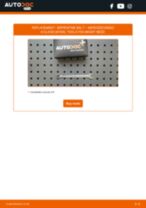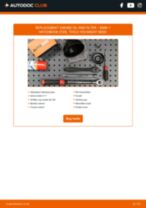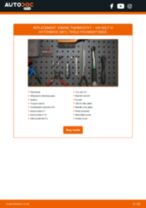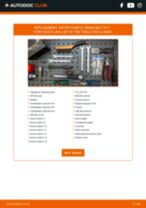Fault code P0106 – a step-by-step guide to diagnosing and fixing it
P0106: causes, symptoms and repairs
Top 50 fault codes
Cars the fault code P0106 is most commonly found on
Most viewed car repair videos
 How to change front wheel bearing on MERCEDES-BENZ M W163 TUTORIAL | AUTODOC
How to change front wheel bearing on MERCEDES-BENZ M W163 TUTORIAL | AUTODOC How to change fuel filter BMW 3 (E90) [TUTORIAL AUTODOC]
How to change fuel filter BMW 3 (E90) [TUTORIAL AUTODOC] How to change Front wheel bearing on VW GOLF 4 TUTORIAL | AUTODOC
How to change Front wheel bearing on VW GOLF 4 TUTORIAL | AUTODOC How to change a rear brake pads FORD FOCUS 3 TUTORIAL | AUTODOC
How to change a rear brake pads FORD FOCUS 3 TUTORIAL | AUTODOC How to change pollen filter / cabin filter on AUDI A6 (C6) [TUTORIAL AUTODOC]
How to change pollen filter / cabin filter on AUDI A6 (C6) [TUTORIAL AUTODOC] How to change engine thermostat on PEUGEOT 207 [TUTORIAL AUTODOC]
How to change engine thermostat on PEUGEOT 207 [TUTORIAL AUTODOC] How to change fuel filter NISSAN X-TRAIL T30 TUTORIAL | AUTODOC
How to change fuel filter NISSAN X-TRAIL T30 TUTORIAL | AUTODOC How to change front wheel bearing TOYOTA YARIS XP10 TUTORIAL | AUTODOC
How to change front wheel bearing TOYOTA YARIS XP10 TUTORIAL | AUTODOC
Best Online Car Repair Guides
Want to get more useful information?  Ask on the forum
Ask on the forum
Ask questions or share your repair experience on the car forum. Subscribe to updates so you don't miss out on new guides.
Tips from AUTODOC CLUB
View more
 How to tell if a tie rod is faulty
How to tell if a tie rod is faulty #DIY Guide: How to Fix a Cracked Windscreen Without a Garage Visit
#DIY Guide: How to Fix a Cracked Windscreen Without a Garage Visit Why Is the Windscreen Washer Not Spraying? Solution
Why Is the Windscreen Washer Not Spraying? Solution The most common problems when buying a used car | AUTODOC
The most common problems when buying a used car | AUTODOC
Unlock your car maintenance assistant!
Track expenses, manage logs, schedule replacements, and more.
Repair and replacement manuals

Time to replace parts? Get even better deals in our Shop app.

SCAN ME

























